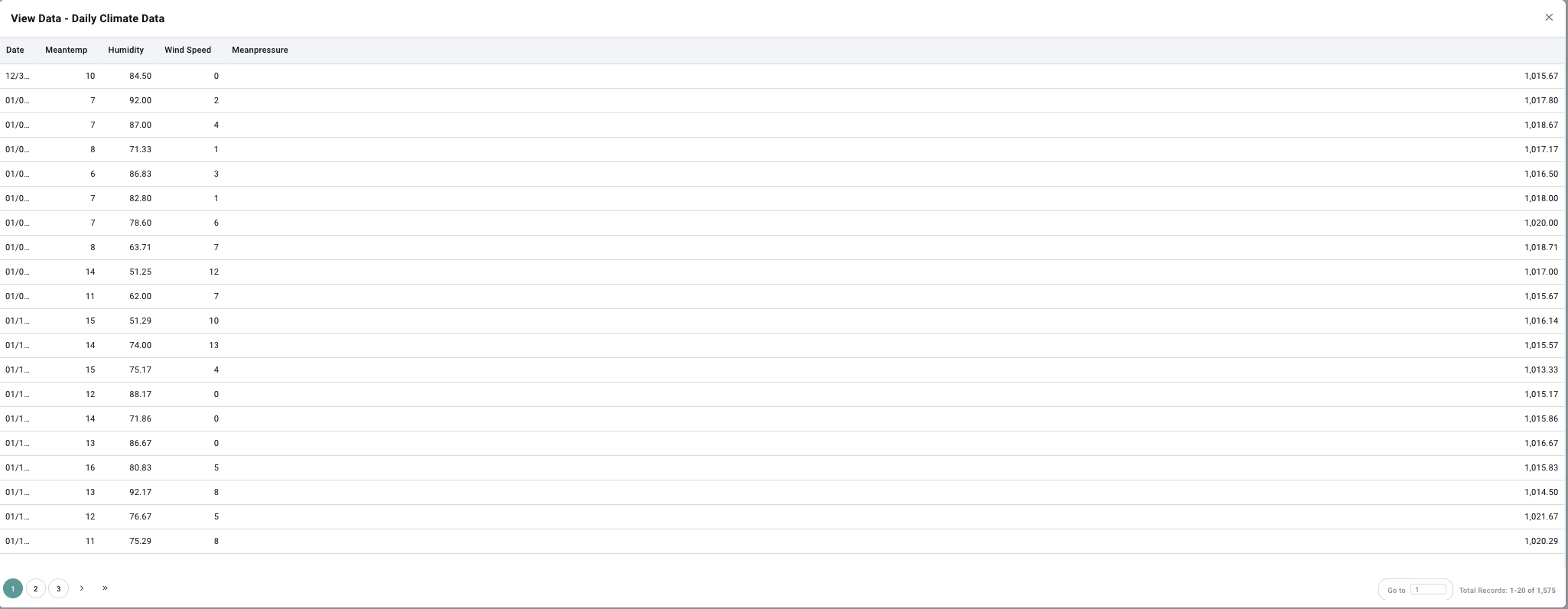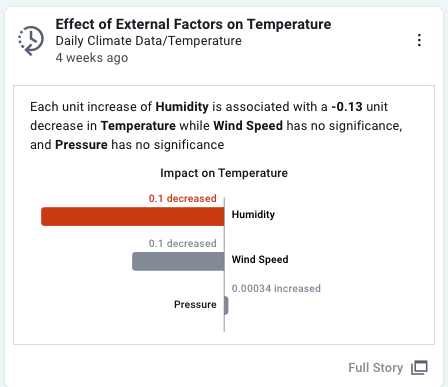Intended audience: end-users data science developers
AO Easy Answers: 4.3
Overview
Forecasts a primary variable over time while factoring in external influencers for improved accuracy.
Purpose
The purpose of performing Univariate Time Series Analysis with exogenous variables is to forecast and understand the behavior of a single primary variable (e.g., Mean Temperature) over time, considering external influencing factors (such as Humidity, Wind Speed, Mean Pressure). This helps businesses predict trends and make informed decisions by identifying and quantifying the impact of external conditions.
Business Example
A weather-sensitive tourism company aims to forecast daily mean temperature accurately to anticipate demand fluctuations for outdoor activities. By understanding how humidity, wind speed, and air pressure influence temperature patterns, the company can optimize staffing, scheduling, and inventory management, ensuring cost efficiency and customer satisfaction.
Scenario
-
You're forecasting daily mean temperature (
Meantemp) for the next 30 days. -
External factors (
Humidity,Wind Speed, andMeanpressure) are used as explanatory or exogenous variables to enhance the accuracy of the mean temperature forecast. -
Analysis uses historical daily observations of temperature and weather parameters to understand how each external factor affects temperature variation over time.
Results
-
The analysis quantifies the degree to which each external variable (Humidity, Wind Speed, Mean Pressure) contributes to the variability in Mean Temperature.
-
Improved forecasting accuracy by incorporating external variables, with reductions in prediction error (e.g., Mean Absolute Error or RMSE).
-
Identification of critical weather conditions that significantly influence temperature changes, enabling proactive responses to anticipated weather events.
Data Sample

Infographics Insights

Full Story Insights


Contact App Orchid | Disclaimer
